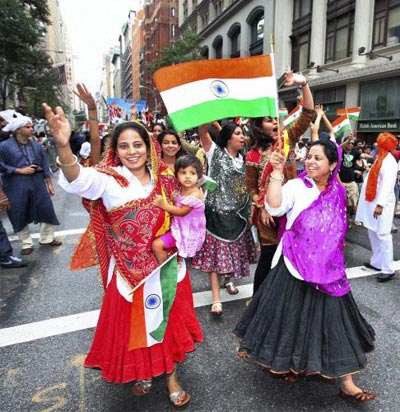
Washington, August 15: Indian Americans from East to West coast celebrated India's 66th Independence Day with colourful parades, Bollywood stars and cultural performances but with a prayer in their hearts for the Wisconsin gurdwara attack victims.
Thousands of community members are expected to join Wednesday's official celebration in Washington with the Indian Ambassador Nirupama Rao hoisting the national flag at her residence.
Similar events are planned at Indian Consulates in New York, San Francisco, Houston, Atlanta and the Permanent Mission of India to the UN.
The Independence Day festivities kicked off Saturday with Bollywood actor Vinod Khanna leading the inaugural India Day Parade on Long Island in Hicksville, an upscale suburb of New York emerging as the newest 'Little India' in the US.
India's Consul General in New York, Prabhu Dayal, also joined the parade along with local officials.
Bollywood actress Prachi Desai Sunday led another India Day parade as grand marshal with music director Aadesh Shrivastava in Iselin, New Jersey, which has one of the largest concentrations of Indian-Americans in the US.
In Henderson, Nevada, Friends of India hosted their second annual parade Saturday featuring Miss Nevada 2012 Amanda Meagher and the national bird of India, a peacock.
In Boston, thousands gathered at the Hatch Memorial Shell Sunday for day-long festivities featuring a mix of classical, fusion, and Bollywood music and dance performances and a sampling of cuisine unique to various parts of India.
Organised by the India Association of Greater Boston, the event also featured sombre reflection and prayer for the victims of the Aug 5 shooting at a Sikh gurdwara in Oak Creek, Wisconsin.
The India Association of Los Angeles San Fernando Valley will have musician Bappi Lahiri and other Saregama singers at their celebration Aug 18 in Van Nuys, California.
The biggest parade in the US, hosted by the Federation of Indian Associations for the 32nd time this year, will take place in Manhattan Aug 19 and features Bollywood actor Saif Ali Khan, cricketer Anil Kumble, 40 floats, and dance and song performances.





Comments
Add new comment